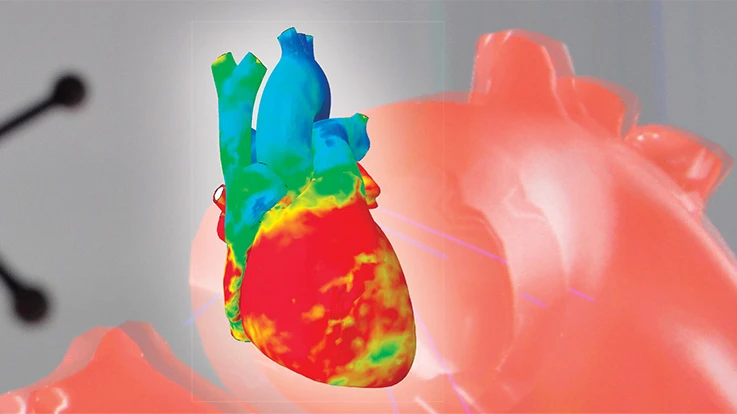
Dassault Systèmes’ Living Heart Project
Hollywood, Florida – Dassault Systèmes officials outlined multiple milestones in its Living Heart Project aimed to drive the creation and use of simulated 3D personalized hearts in the treatment, diagnosis and prevention of heart diseases. As the scientific and medical community seeks faster and more targeted ways to improve patient care, the Living Heart Project is extending its reach through new partnerships and applications while lowering the barriers to access.
The Living Heart is now available through the 3DEXPERIENCE platform on the cloud, offering the speed and flexibility of high-performance computing (HPC) to even the smallest medical device companies. Any life sciences company can immediately access a complete, on-demand HPC environment to scale up virtual testing securely and collaboratively while managing infrastructure costs. This also crosses an important boundary toward the use of the Living Heart directly in a clinical setting.
“Medical devices need thousands of tests in the development stage,” says Joe Formicola, president and chief engineer, Caelynx. “With the move of the Living Heart to the cloud, effectively an unlimited number of tests of a new design can be carried out simultaneously using the simulated heart rather than one at a time, dramatically lowering the barrier to innovation, not to mention the time and cost.”
Since signing a 5-year agreement with the FDA in 2014, Dassault Systèmes continues to align with the regulatory agency on the use of simulation and modeling to accelerate approvals. Bernard Charles, CEO and vice chairman of the board of directors of Dassault Systèmes, gave the keynote at the 4th Annual FDA Scientific Computing Day in October 2016. Later, in July 2017, FDA Commissioner Dr. Scott Gottlieb publicly outlined the FDA plan to help consumers capitalize on advances in science stating, “Modeling and simulation plays a critical role in organizing diverse data sets and exploring alternate study designs. This enables safe and effective new therapeutics to advance more efficiently through the different stages of clinical trials.”
The Living Heart Project has grown to more than 95-member organizations worldwide including medical researchers, practitioners, device manufacturers and regulatory agencies united in a mission of open innovation to solve healthcare challenges. The project has supported 15 research grant proposals by providing access to the model, associated technologies and project expertise. Novel use of the model to understand heart disease and study the safety and effectiveness of medical devices has appeared in eight articles published in peer-reviewed journals to date.
For the first time, the Living Heart was used to simulate detailed drug interactions affecting the entire organ function. Researchers at Stanford University working with UberCloud recently used the Living Heart as a platform for a model that would enable pharmaceutical companies to test drugs for the risk of inducing cardiac arrhythmias, the leading negative side effect preventing FDA approval.
“The Living Heart Project is a strategic part of a broader effort by Dassault Systèmes to leverage its advanced simulation applications to push the boundaries of science,” says Jean Colombel, vice president life sciences, Dassault Systèmes. “By creating both a community and a transformational platform we are beginning to see the advances from the Living Heart Project being used for additional aspects of cardiovascular research as well as for other parts of the body, for example the brain, the spine, the foot, and the eye, to reach new frontiers in patient care.”
Get curated news on YOUR industry.
Enter your email to receive our newsletters.
Latest from Today's Medical Developments
- Machine learning framework enhances precision, efficiency in metal 3D printing
- SkillMill – 60-year-old milling machine with digital twin
- Lumetrics’ OptiGauge II EMS
- EMI completes installation of 128-axis CNC turning & milling machine
- Ottobock invests in innovative technologies from MIT start-ups
- Air Turbine Technology's high-speed live tools for Swiss Lathes
- Sandvik announces several software acquisitions
- Dart Controls’s EZ VFD, variable frequency drives





